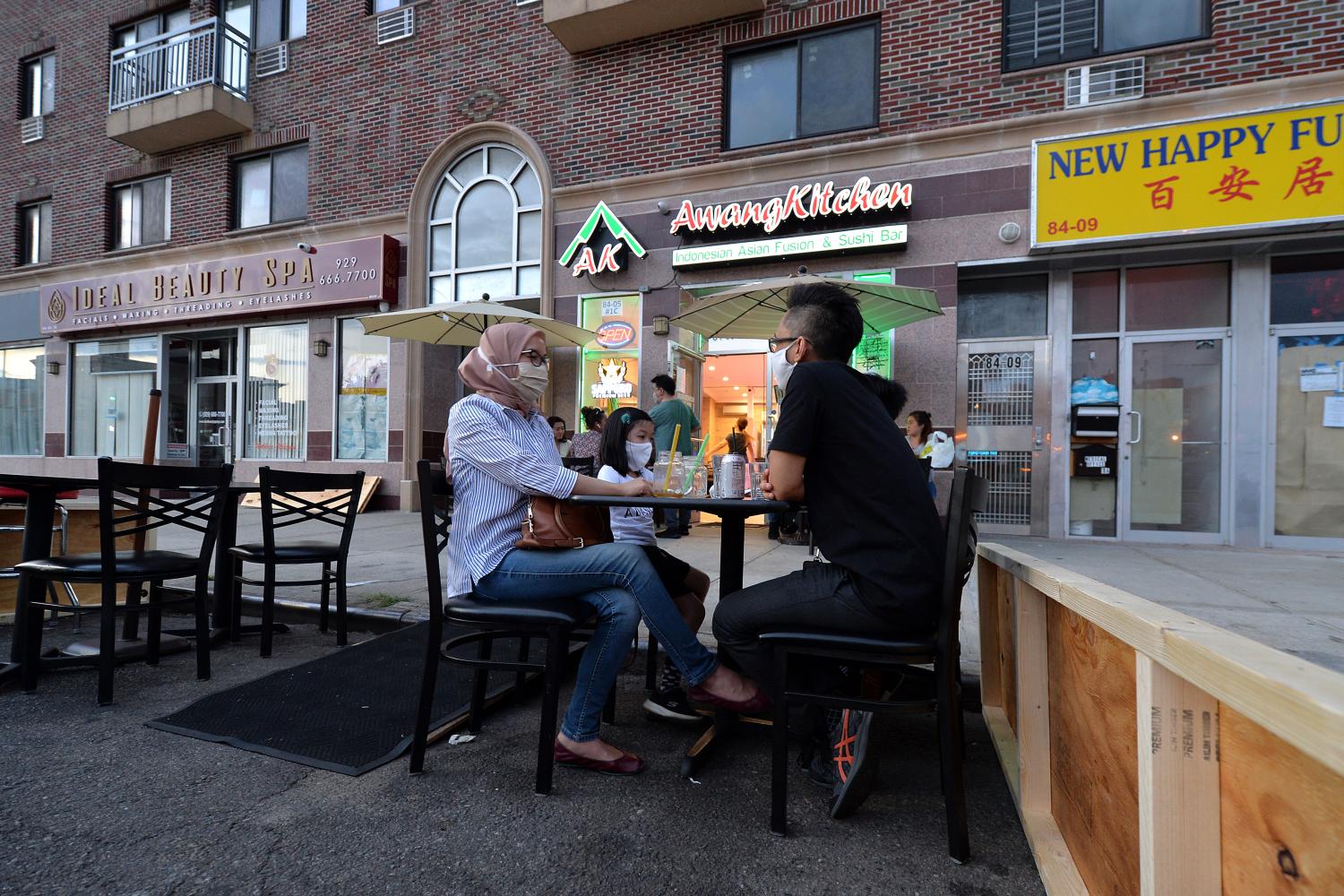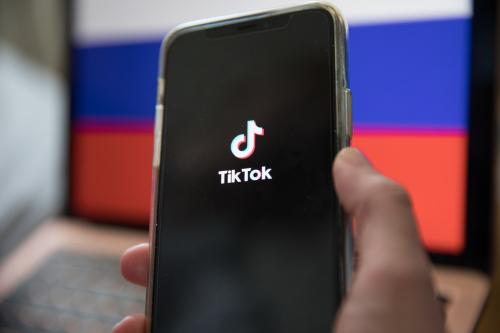This essay is part of the Actionable Ideas for Economic Recovery in American Cities, a feature of the COVID-19 Metro Recovery Watch.
The challenge
In the wake of the COVID-19 pandemic’s massive job losses and amid a fraught “reopening” characterized by a rapid increase in cases, many public and private sector leaders around the country are nonetheless fully engaged in recovery planning. Their original mandate may have been to restore lost jobs and businesses. But the murder of George Floyd and subsequent public outcry for racial justice have ratcheted up pressure for recovery to address the deep racial inequalities that preceded and were laid bare by the pandemic.
The scale and speed of this economic collapse is without precedent in modern American history. In just two months, measures to safeguard public health wiped out a decade’s worth of job gains since the Great Recession. Despite some initial hopeful signs as governors relaxed those measures, millions of Americans continue to file for unemployment insurance benefits each week. Millions of small businesses have shuttered, and many may never reopen. Some cities and regions have been hit especially hard, particularly those that depended on vulnerable industries such as tourism and hospitality. And COVID-19 case counts rose rapidly in many areas of the country through June and early July, diminishing hopes that the U.S. labor market might bounce back quickly.
Given the enormous disruption to the economy and Americans’ lives in general, the pressure local leaders feel to “return to normal” is understandably strong. Yet for many Americans—particularly people of color and those living in struggling post-industrial regions—the “normal” that preceded the pandemic wasn’t cutting it. The dominant dynamic shaping the U.S. economy over the past decade has been “winner-take-most,” in which digital platforms concentrated wealth and opportunity in the hands of relatively few people in relatively few places.
Out of nearly 200 metropolitan areas that together house 80% of U.S. population, exactly zero managed to grow their economies, raise standards of living, and reduce gaps by income, race, and place consistently from 2008 to 2018. By the mid-2010s, a whopping 44% of the U.S. workforce—including 54% of Black workers and 63% of Latino or Hispanic workers—earned less than a family-sustaining wage, evidence that low-paying service jobs have proliferated throughout metro area economies. These disparities meant that local economies were not only failing to maximize the potential of their people and communities pre-crisis, but also were more exposed to the health and economic damage COVID-19 would go on to inflict.
Rising racial and spatial inequality before the crisis was not a new phenomenon; it merely compounded the challenges that structural racism has long posed for people of color. By nearly every measure, Black and brown Americans trail other groups in indicators of economic well-being, mobility, and—most dramatically—wealth. Now, videos from body cameras and cellphones are providing the rest of America stark visual examples of how prevailing norms, institutions, and policies systematically devalue Black people and communities.
COVID-19 threatens to widen these disparities further. The digital rich appear to be getting richer, advantaging businesses with the technological sophistication and scale to dominate sectors, workers who can telework from the safety of their homes, and regions with a strong foothold in the technology economy. Meanwhile, small retail businesses are losing out even faster to online retail oligopolies, and many workers in lower-paying service industries have either been displaced due to social distancing orders or must report to work for essential frontline positions, putting themselves and their families at greater health risk for limited financial reward.
Black and Latino or Hispanic workers are more likely than others to both have lost their job during the pandemic and to occupy low-wage, frontline essential worker roles. Black and Latino or Hispanic small business owners were less likely to receive initial support from CARES Act programs, imperiling their enterprises and the individual and community wealth they generate. And above all, Black and Latino or Hispanic Americans are three times more likely to contract COVID-19, due to their disproportionate exposure to frontline work, overcrowded housing conditions, and preexisting health challenges resulting from institutionalized racism.
Fortunately, there’s now a window—and an imperative—to act. Local leaders who are chairing, convening, or participating in the development of regional economic recovery strategies can use their positions of influence to demand that their places and people do better than “return to normal.” They can aim to rebuild better. They can leverage the force of public opinion, the private sector, government, and philanthropy to create higher-quality and racially inclusive local economies. They can develop recovery agendas anchored by specific innovations in policy and practice that do not separate these goals but braid them together in a mutually reinforcing vision.
Unfortunately, history does not offer many successful cases of inclusive economic transformation. As the statistics above demonstrate, the nation’s recovery from the Great Recession exacerbated racial disparities. Black workers took longer than others to regain lost ground on employment and earnings. Even by 2019, homeownership rates for Black and Latino or Hispanic households remained considerably below their 2006 levels, and roughly 50% lower than those for white households. These inequitable outcomes reflect a powerful adherence to status-quo economic development approaches that prioritized short-run job creation. To the extent that leaders took on issues of racial equity, they addressed them separately and much later in the business cycle. This approach only served to reinforce economic systems that favor the privileged, deepening inequities that erode trust and resilience and limiting overall potential by leaving too many talented individuals on the sidelines.
Even in past instances where racial equity has been elevated as a recovery goal, outcomes have fallen short. In the wake of Hurricane Katrina and the failure of the levees, there was a broad consensus that New Orleans must bounce back better than before, with a stronger, more equitable, and more resilient economy. Important efforts were made to boost entrepreneurship, strengthen building codes, overhaul the criminal justice system, and adopt resilience strategies. For all that, however, income inequality in Greater New Orleans has widened, with Black households in 2018 earning lower incomes than before the storm, in 2005. The New Orleans Workers’ Center for Racial Justice describes the local economy as still beset by a long-standing “plantation tradition,” in which Black workers remain relegated to low-wage service jobs supporting upscale tourism and predominantly white industries.
At this critical moment in our nation’s history, however, past need not be prologue. Rebuilding better, with a commitment to quality and equity suffused throughout state and local recovery strategies, can help communities begin to transcend the weaknesses that plagued their economies before the crisis and restore faith in the public, private, and civic institutions that steer places through both prosperity and adversity.
This overview and its accompanying series of policy ideas aim to give local leaders in government, business, nonprofits, and higher education—as well as their state partners—a recovery framework through a set of nine concrete ideas for rebuilding better. While achieving a more prosperous and equitable future requires the actions of many individuals, organizations, and policymakers (not least funding from the federal government to forestall severe cuts in state and local services), this series offers some practical steps that local leaders can take as a down payment toward broader reform.
The vision
In the wake of the COVID-19 crisis, local leaders will rebuild better, generating higher-quality job and wealth creation opportunities in their local economies that advance racial inclusion.
Principles for action
- Set goals to increase prosperity and racial equity. As demand ultimately bounces back, so too will sectors and jobs that have traditionally failed to offer workers good wages, benefits, and pathways to family-sustaining earnings. To rebuild better, local and regional leaders must adopt a shared definition of a higher-quality, more equitable economy—embedded in quantifiable goals and metrics—that informs recovery strategies. More than goals and metrics, however, leaders must also create a formal mechanism in which they can visibly track progress and hold themselves and partner institutions accountable for their collective success or failure.
- Adopt a three-part framework to pursue those goals. In the past, efforts to achieve higher-quality, more equitable economic outcomes have involved the creation of special offices and initiatives, or implicated the work of individual organizations in fields such as community development. To rebuild better, local and regional leaders must embed this work within and across diverse functions to help:
- Incentivize and nurture the growth of higher-quality businesses and industries, particularly those led by people of color. Local leaders should aim to stabilize and strengthen not only neighborhood small businesses, but also tech ecosystems that support Black and brown entrepreneurs. They should provide outreach and services to “missing middle” companies that can generate quality jobs, and position themselves to capture new production opportunities that boost their resiliency to future global risks.
- Source and develop a racially diverse talent base, while lifting the quality floor for all jobs. Local leaders should redesign career navigation and placement services to focus on pathways to better jobs and employers, and create local service corps that can deploy recently unemployed residents to meet short-term community needs and bolster longer-term community health infrastructure.
- Support connected, vibrant, and inclusive communities. Local leaders should establish digital equity offices that can promote universal broadband access; use a soft real estate market to launch affordable housing acquisition strategies; and empower community real estate investment trusts to increase wealth and economic mobility for residents of structurally disadvantaged communities that COVID-19 has hit hard.
- Build new institutional capacity. If cities, regions, and states rely primarily on traditional civic institutions to carry out local recovery strategies, they will sacrifice credibility with a diverse new generation of stakeholders and are likely to end up with the same underwhelming results. To rebuild better, local and regional leaders must use this moment to develop the capacity of existing institutions or new partnerships with credibility in Black and brown communities to serve as quarterbacks for a racially inclusive economic recovery plan. These entities must be able to engage diverse actors in decisionmaking and drive long-run, multisector commitments toward a shared vision and goals.
Rebuilding better is critical not only for recovery, but also for long-term resilience. By building a more robust jobs base fueled by diverse talent and vibrant neighborhoods, local leaders can reinforce the economic assets and social cohesion that enable communities to better withstand inevitable future shocks.
This work will be complex. Pursuing a higher-value and racially inclusive recovery will take more time and resources than conventional efforts to restore local economies to their pre-crisis state. A “return to normal” is no longer a credible option. With growing public support for measures to enhance racial justice—and with COVID-19’s persistence further delaying a full reopening of the economy—local leaders have the mandate and the runway to unify their communities around this framework, mobilize investors (public, private, and philanthropic), and insure the right institutions are in place to implement specific initiatives. The moment demands nothing less.







